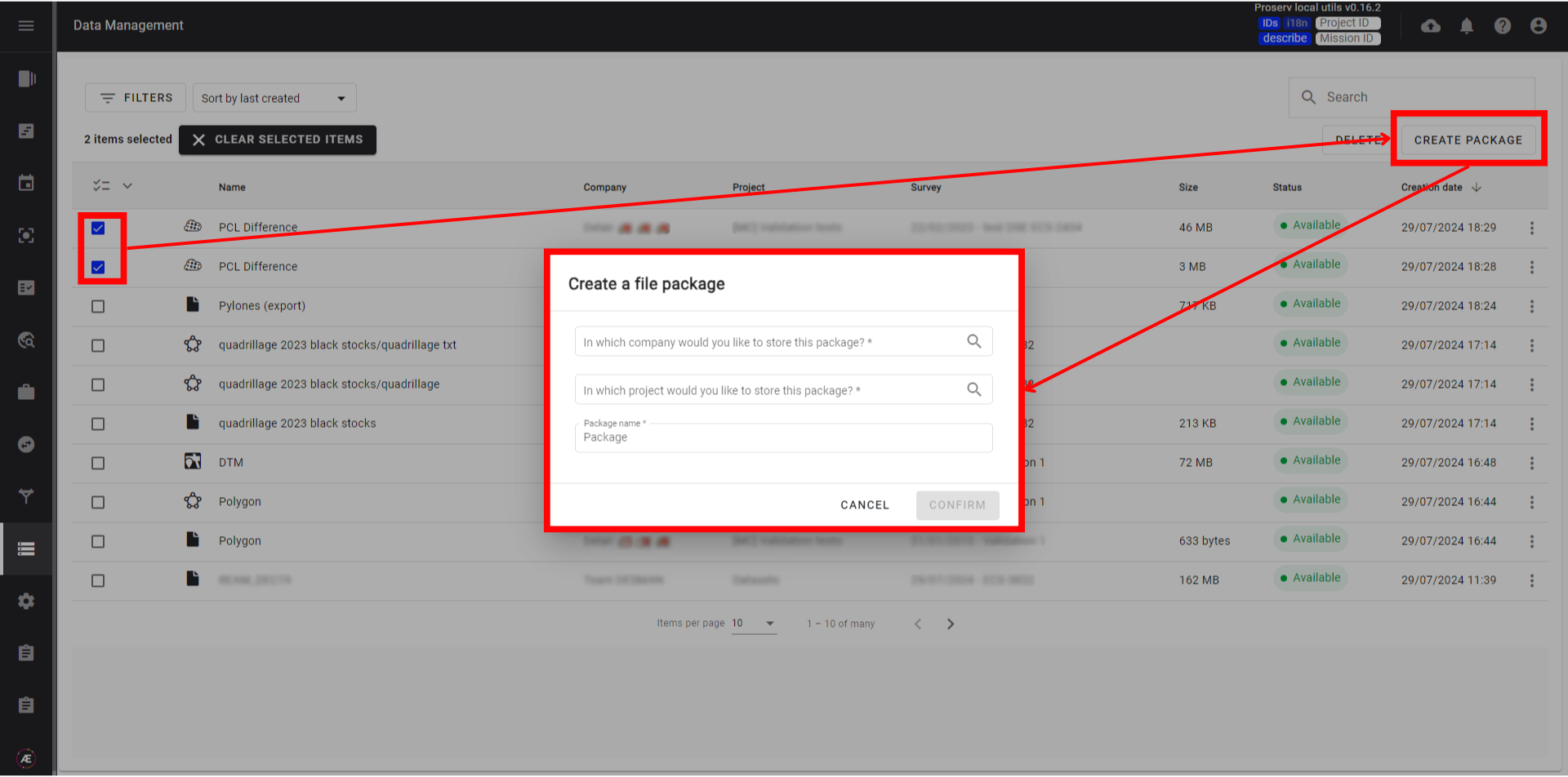Data Management - Dataset Export and Download
1. Data Management Module Overview
With the Data Management Module you can export and download datasets.
Info
Export:
- Creates a new dataset with a defined format and CRS.
- Datasets that are not exportable don't have the option “Export”.
- You need the user rights to export a dataset. Refer to the Account and User Roles Management article.
Download:
- Allows to download a dataset outside the platform (local computer)
2. Exportable Datasets
Following types of datasets can be exported:
- Raster
- Vector from Map view *
- PCL
(*) vector enriched by the platform to enable their visualization.
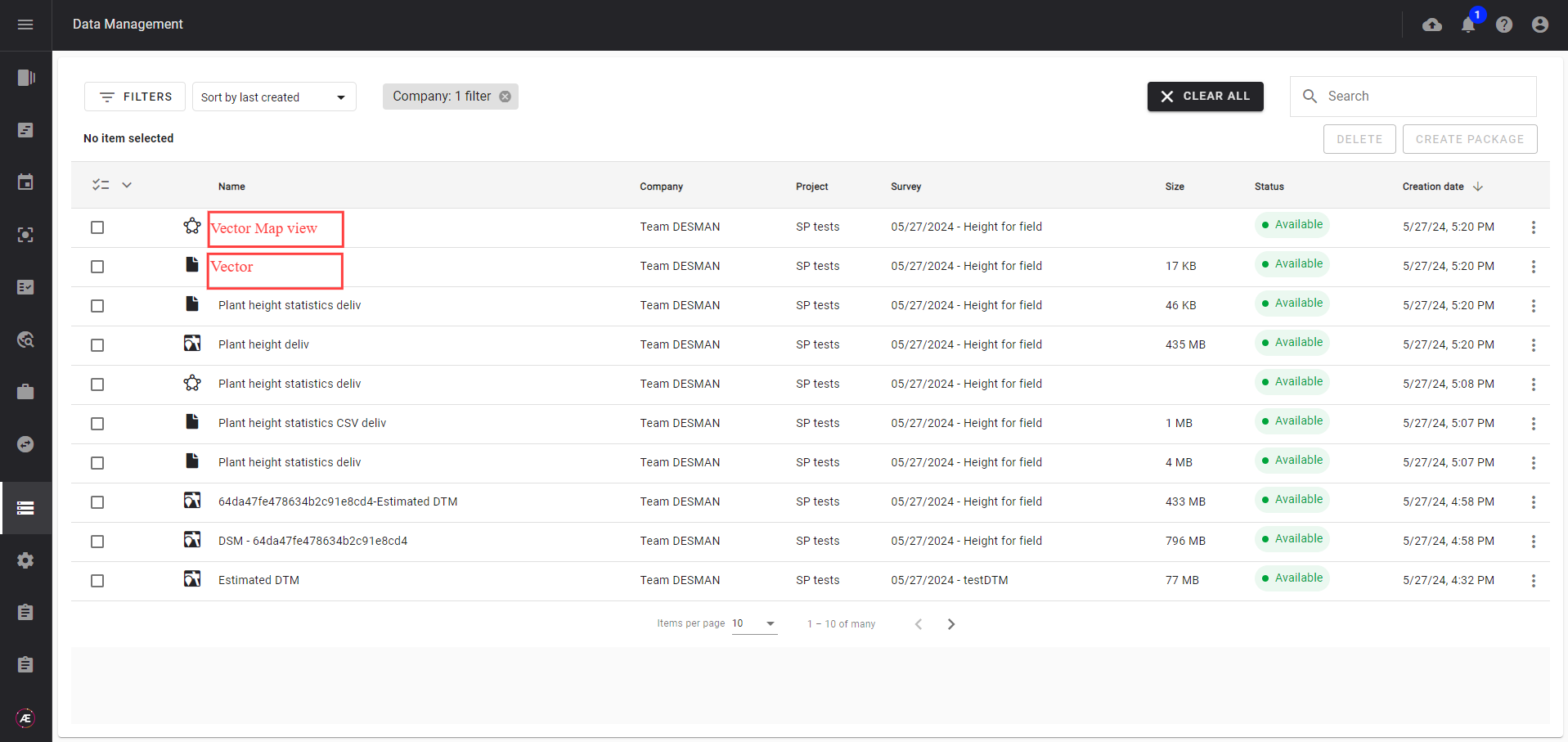
3. Dataset export workflow
- Click on the 3-dot menu of a dataset
- If the data set can be exported, the “Export” button is displayed
- Click on “Export”
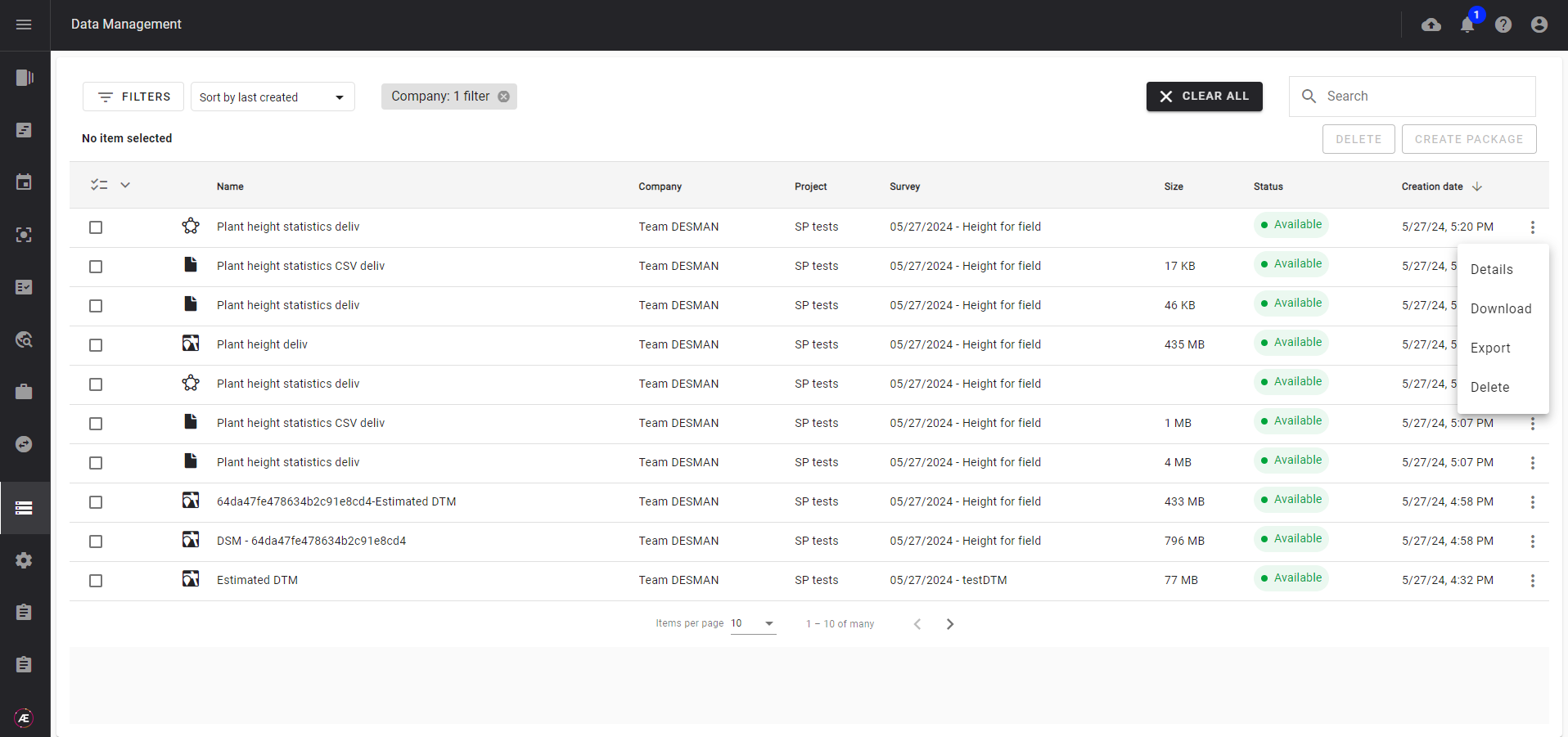
3.1. Vector export
Step 1 - Click on Export.
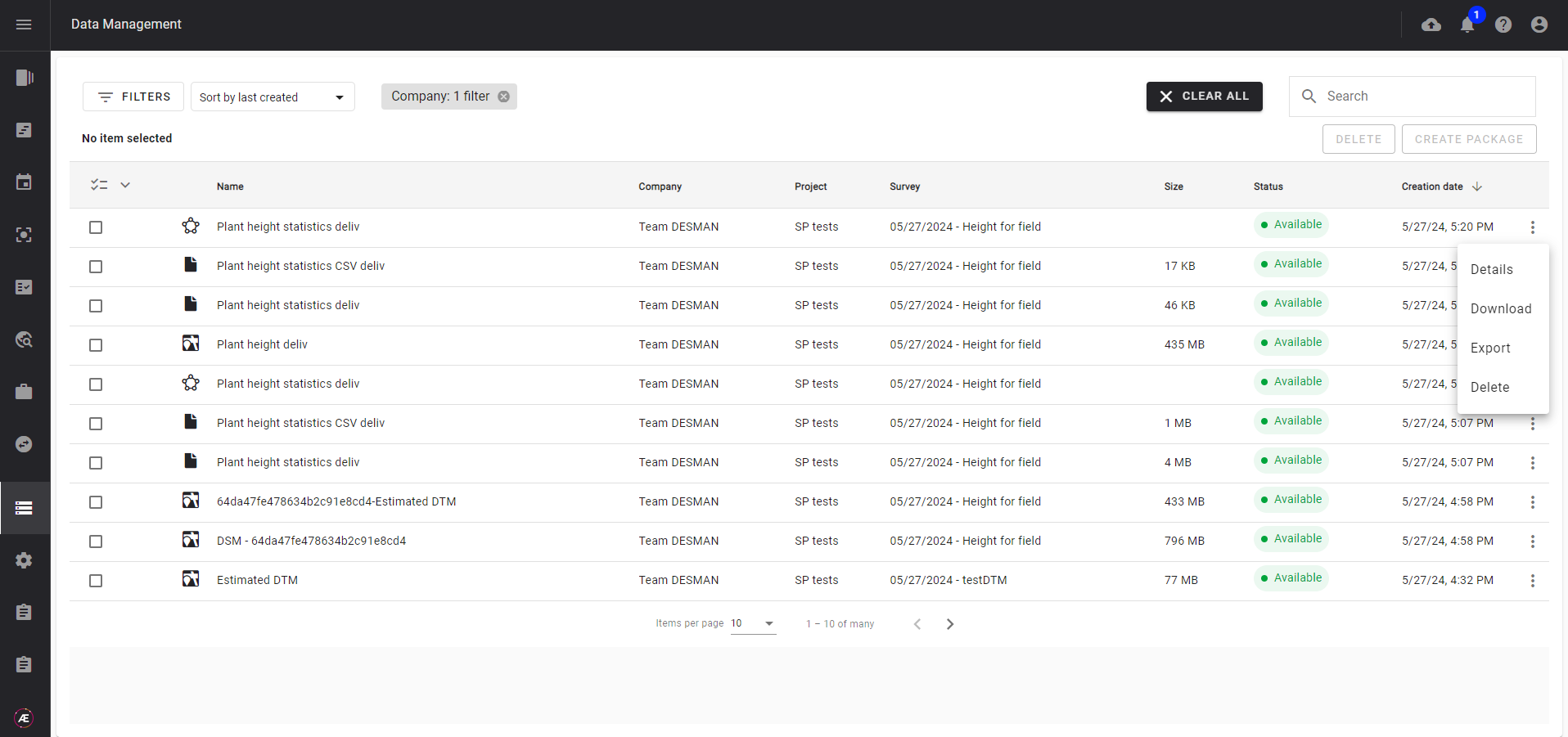
Step 2 - Select the format in the list.
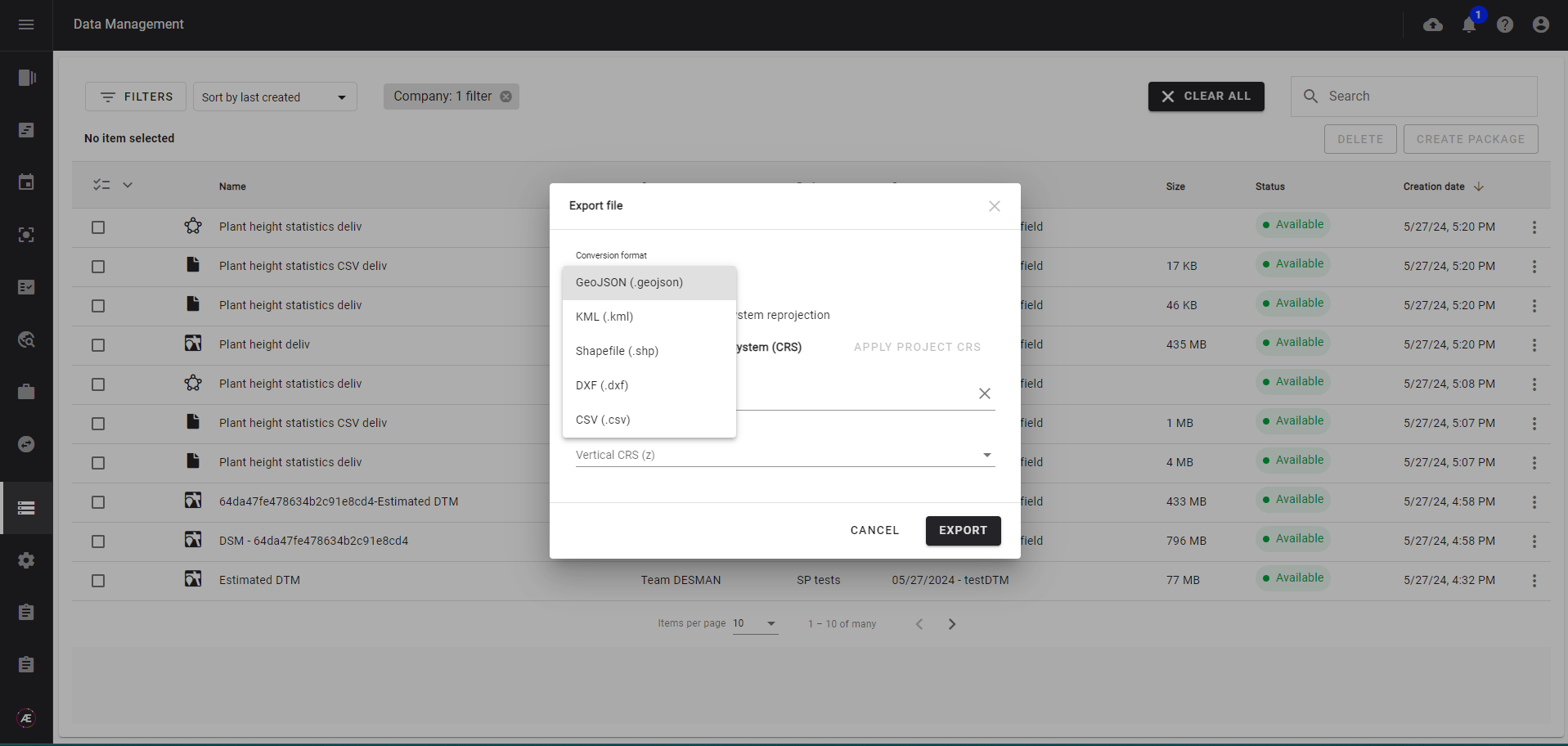
Step 3 - Select the CRS and click on “Export”.
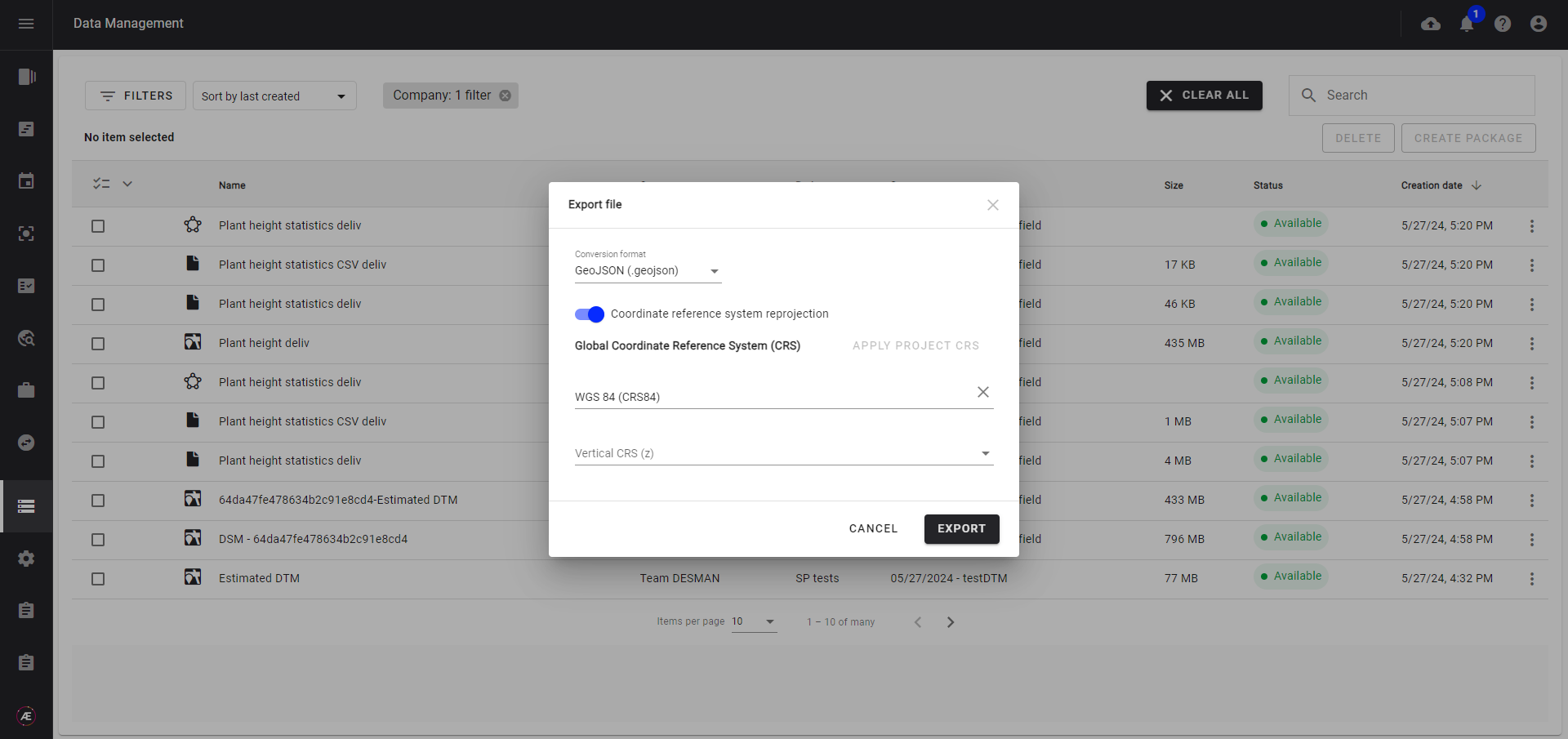
3.2. Raster export
Step 1 - Click on "Export".
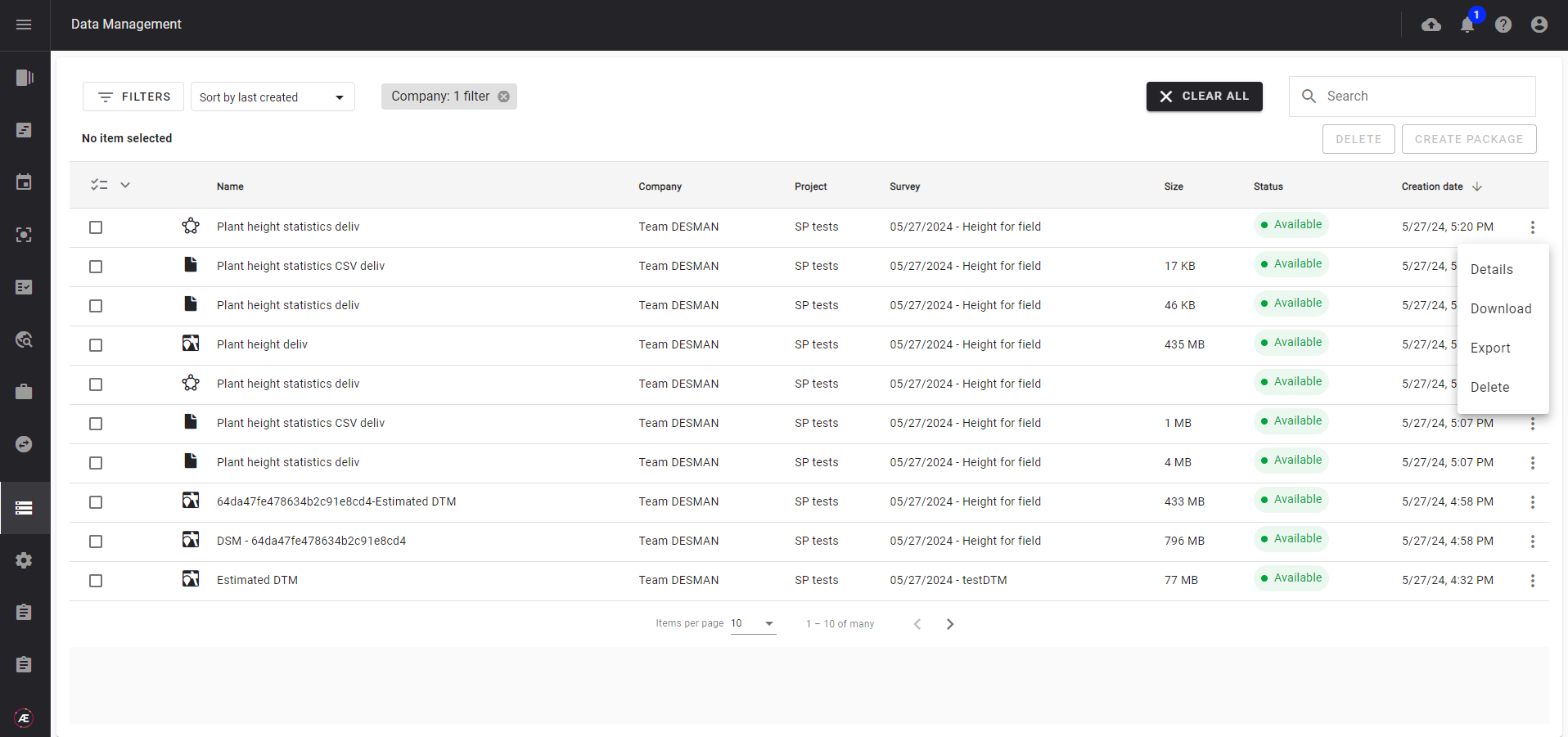
Step 2 - Select the format in the list.
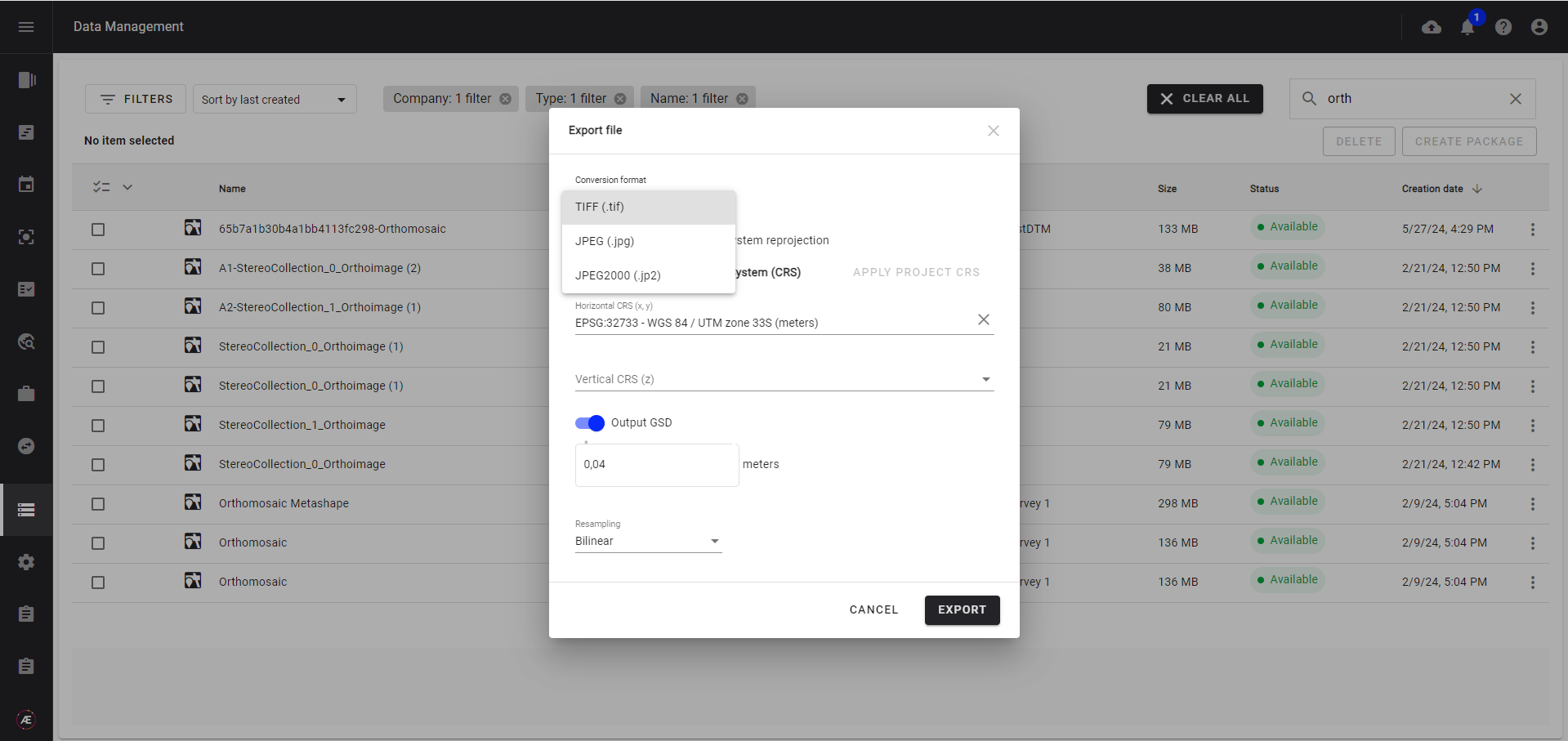
Step 3 - Select the CRS, change the GSD* and the resampling method**, and click on “EXPORT”.
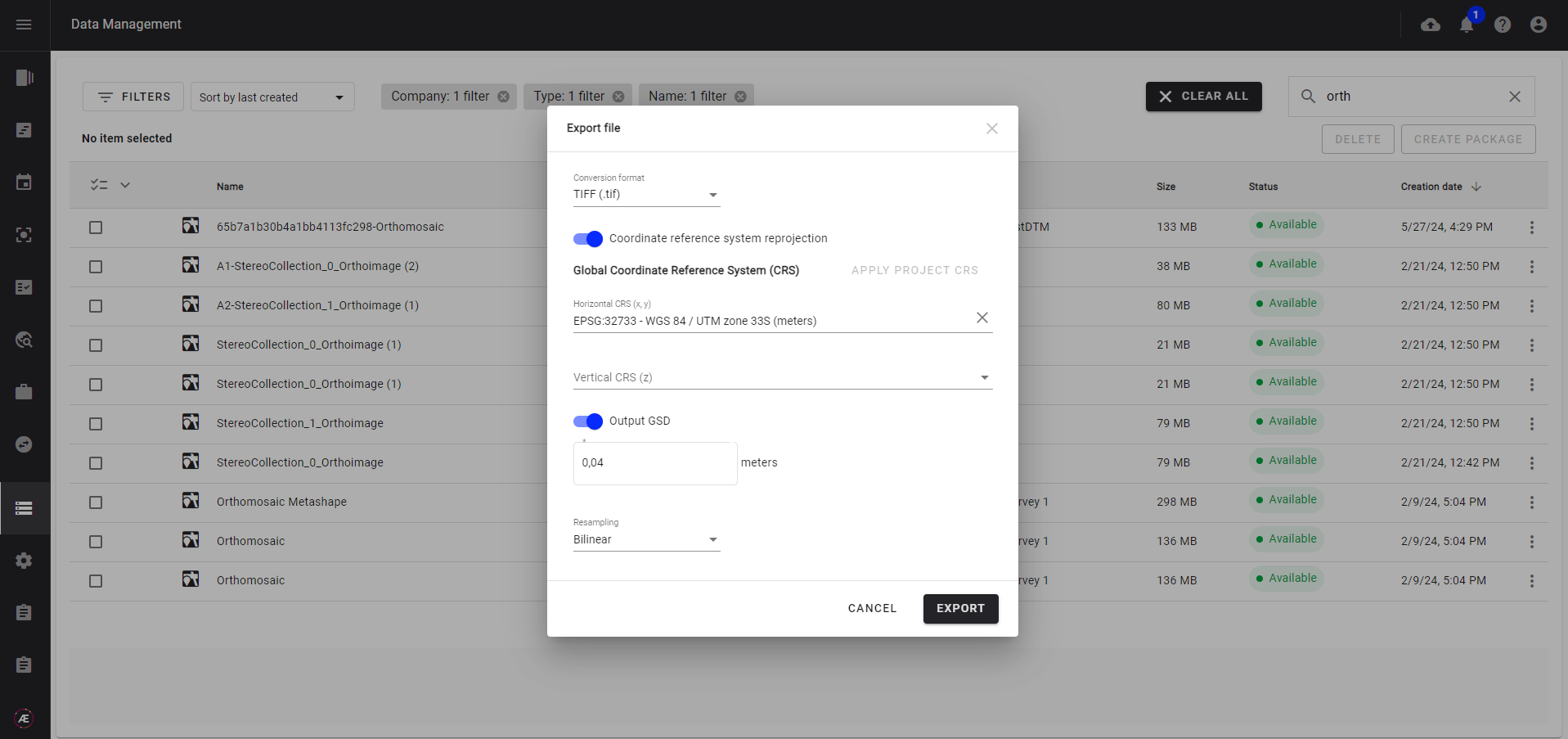
JPEG format supports a maximum image size of 65 000 x 65 000 pixels.
Info
*The displayed value is the rounded value of the original data.
** Here are the definition of the resampling methods:
-
Bilinear (default): Bilinear interpolation is a technique for calculating the values of a grid location based on four nearby grid cells.
It assigns the output cell value by taking the weighted average of the four neighboring cells in an image to generate new values.
It smooths the output raster grid, but not as much as cubic convolution. It’s useful when working with continuous datasets that don’t have distinct boundaries.
When should you use bilinear resampling?
Temperature gradients rasters, digital elevation models, and annual precipitation grids are examples of when to use bilinear interpolation
-
Near: The nearest neighbor technique doesn’t change any of the values from the input raster data set. It takes the cell center from the input raster data set to determine the closest cell center of the output raster. Processing speed, it’s generally the fastest because of its simplicity.
Because nearest neighbor resampling doesn’t alter any values in the output raster dataset, it is ideal for categorical, nominal, and ordinal data.
When should you use the nearest neighbor resampling?
Often, you use the nearest neighbor for discrete data like land cover classification, buildings, and soil types that have distinct boundaries and their limits are discrete.
-
Cubic: Cubic convolution interpolation is similar to bilinear interpolation in that it takes the average of surrounding cells. Instead of using the four nearest cells, the output value is based on averaging the 16 nearest cells. As a result, processing time tends to increase for this method.
This method is generally used for continuous surfaces where much noise exists. Because it takes more neighboring cells compared to bilinear resampling, it’s good for smoothing data from the input raster grid.
When should you use cubic convolution interpolation?
Cubic convolution is ideal for noisy rasters like smoothing out a radar image or surface model.
Cubicspline: Cubic spline resampling
Lanczos: Lanczos windowed sinc resampling.
Average: Average resampling, computes the weighted average of all contributing pixels.
Mode: Mode resampling, selects the value which appears most often of all the sampled points.
Max: Maximum resampling, selects the maximum value from all contributing pixels.
Min: Minimum resampling, selects the minimum value from all contributing pixels.
Med: Median resampling, selects the median value of all contributing pixels.
q1: First quartile resampling, selects the first quartile value of all contributing pixels.
q3: Third quartile resampling, selects the third quartile value of all contributing pixels.
3.3. PCL export
Step 1 - Click on "Export".
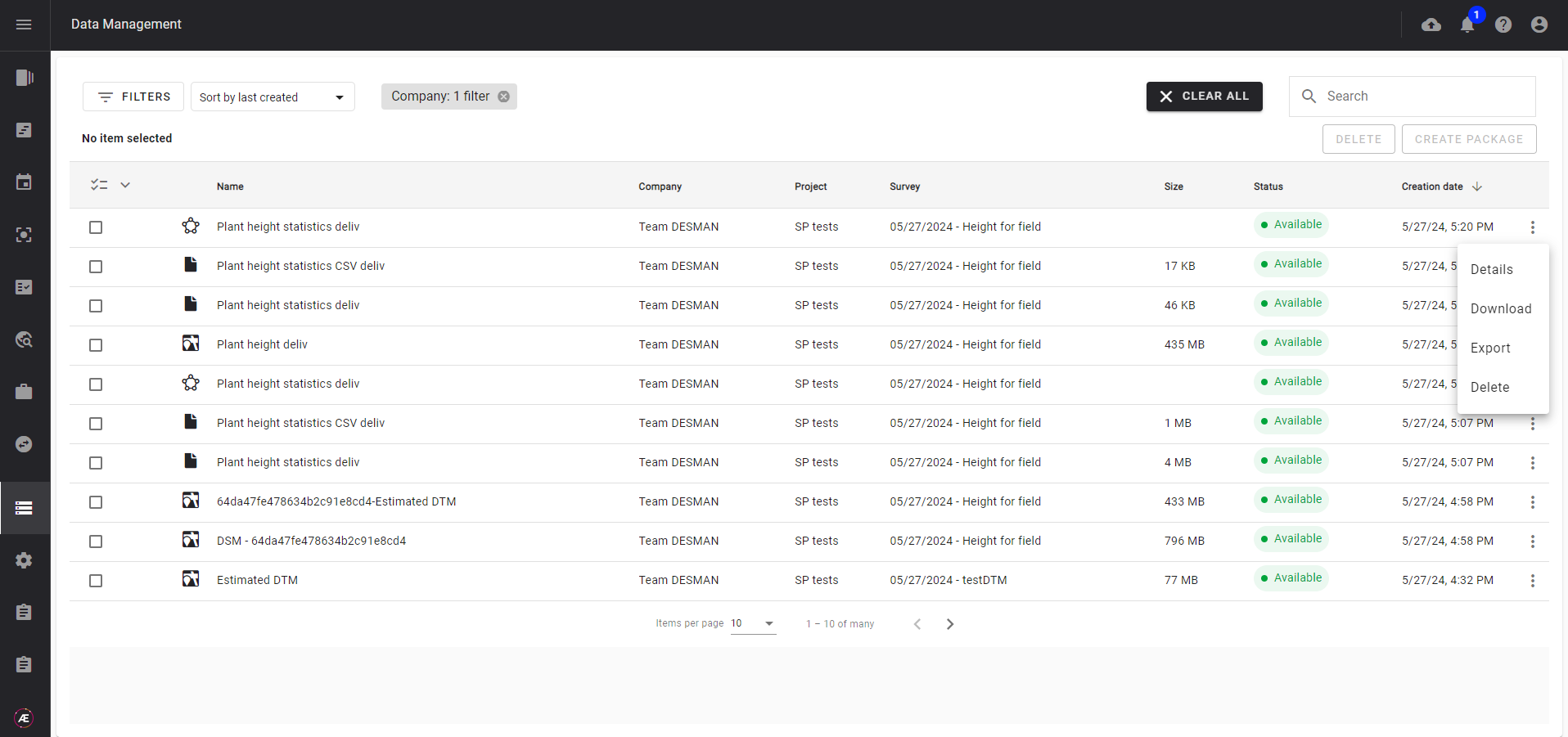
Step 2 - Select the format in the list.
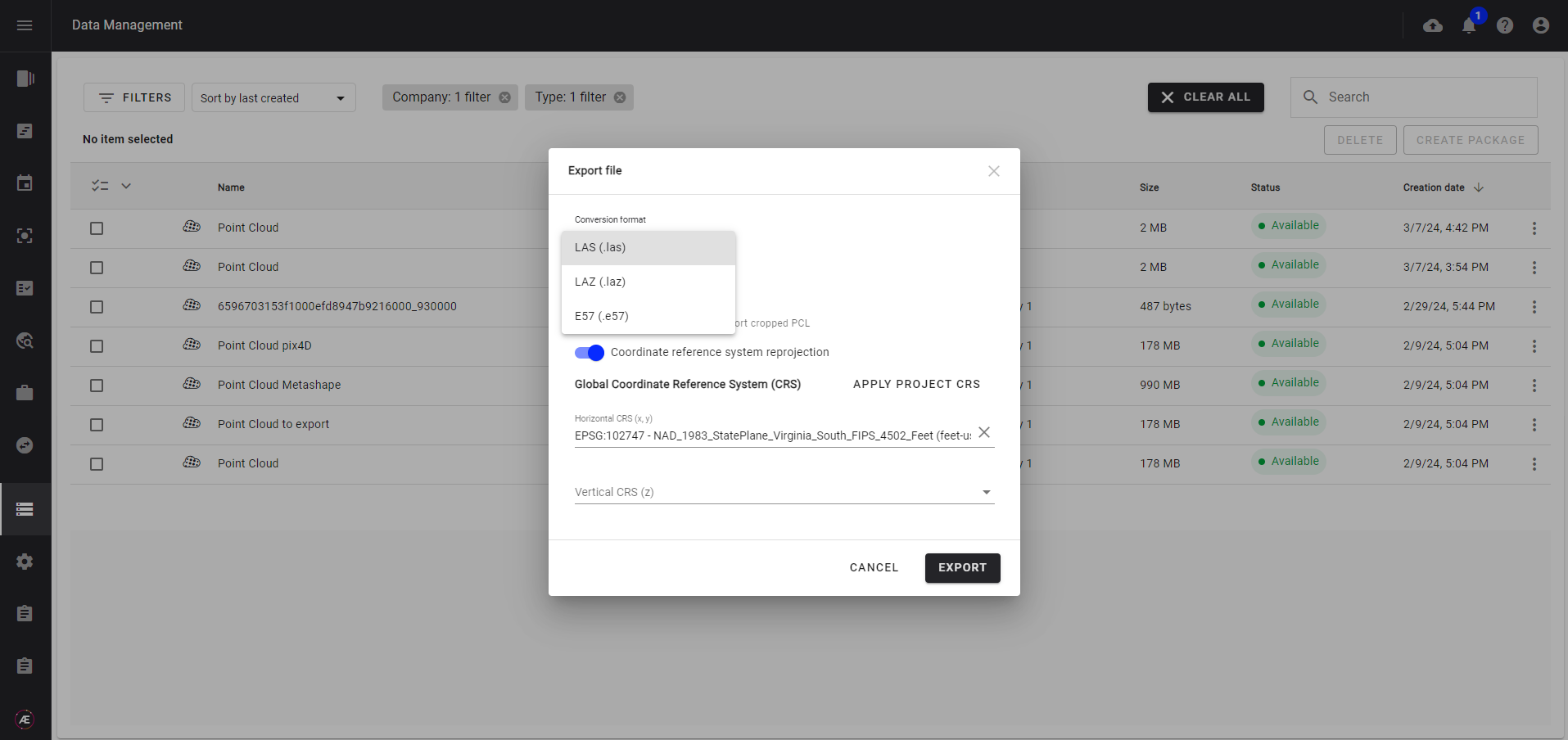
Step 3 - Select the reprojection to apply :
- local frame reprojection and click on “EXPORT”.
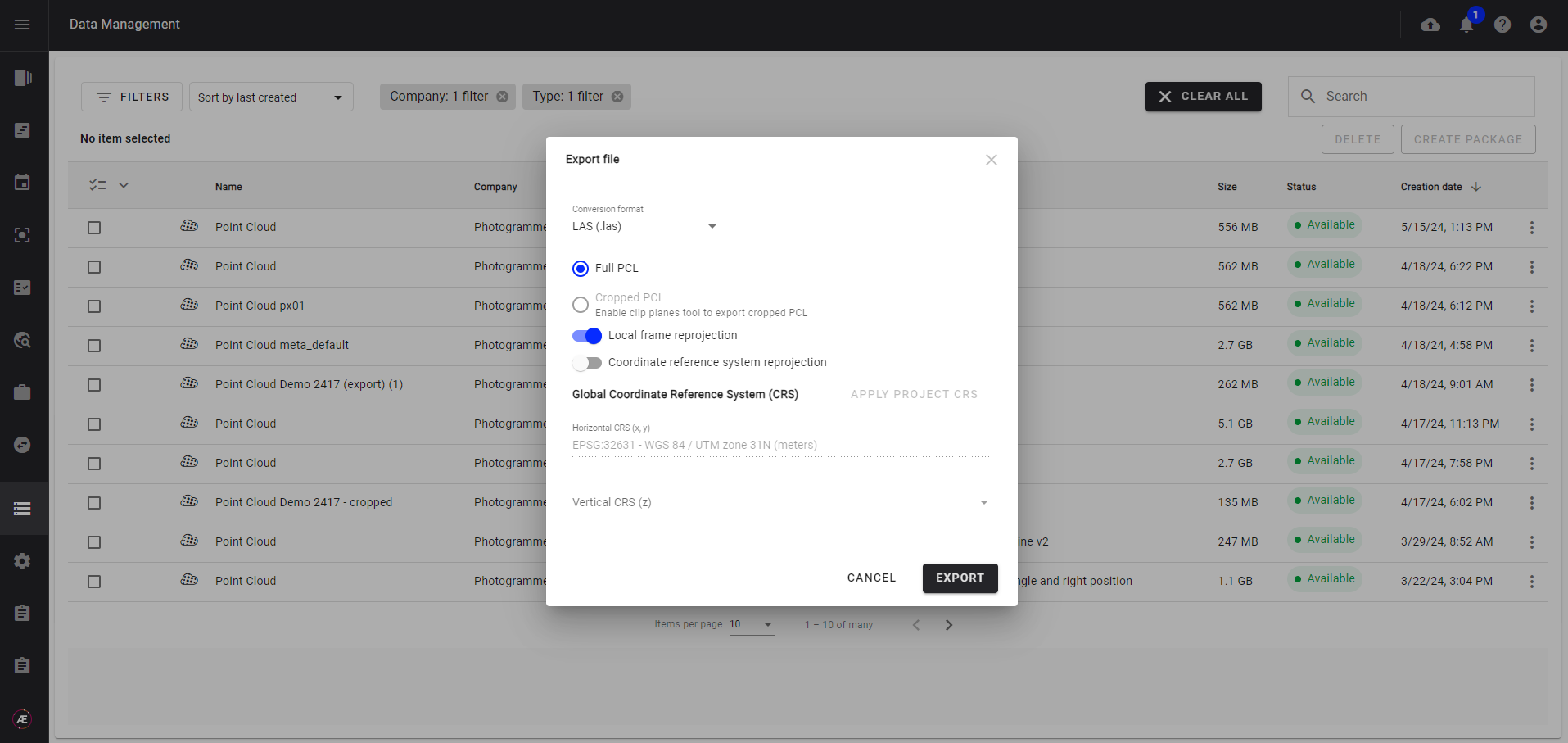
- or Coordinate reference system reprojection and click on “EXPORT”.
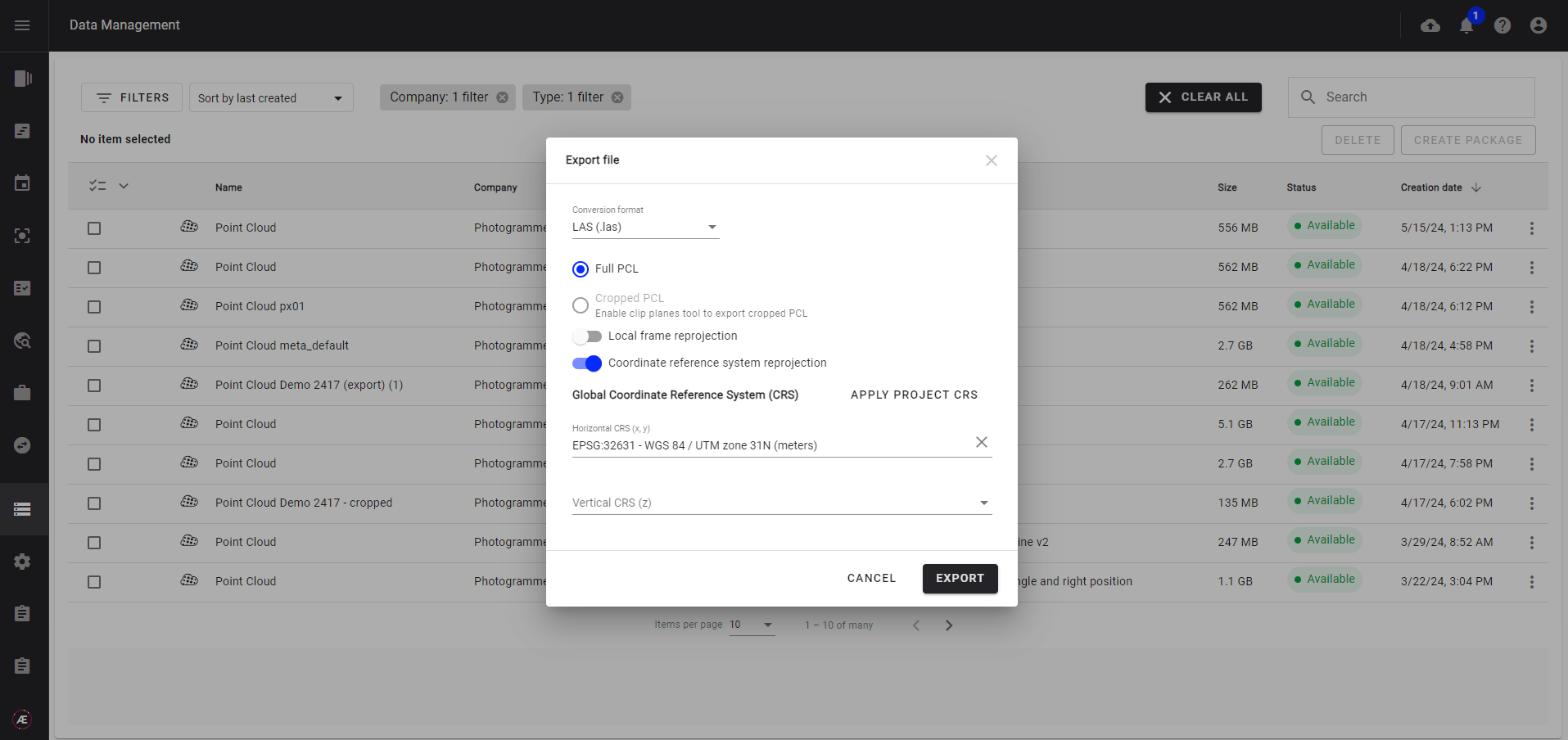
4. Dataset download
You can download one or multiple datasets.
4.1. Download one dataset
Download one dataset from the menu by clicking on the 3 dots menu and "Download".
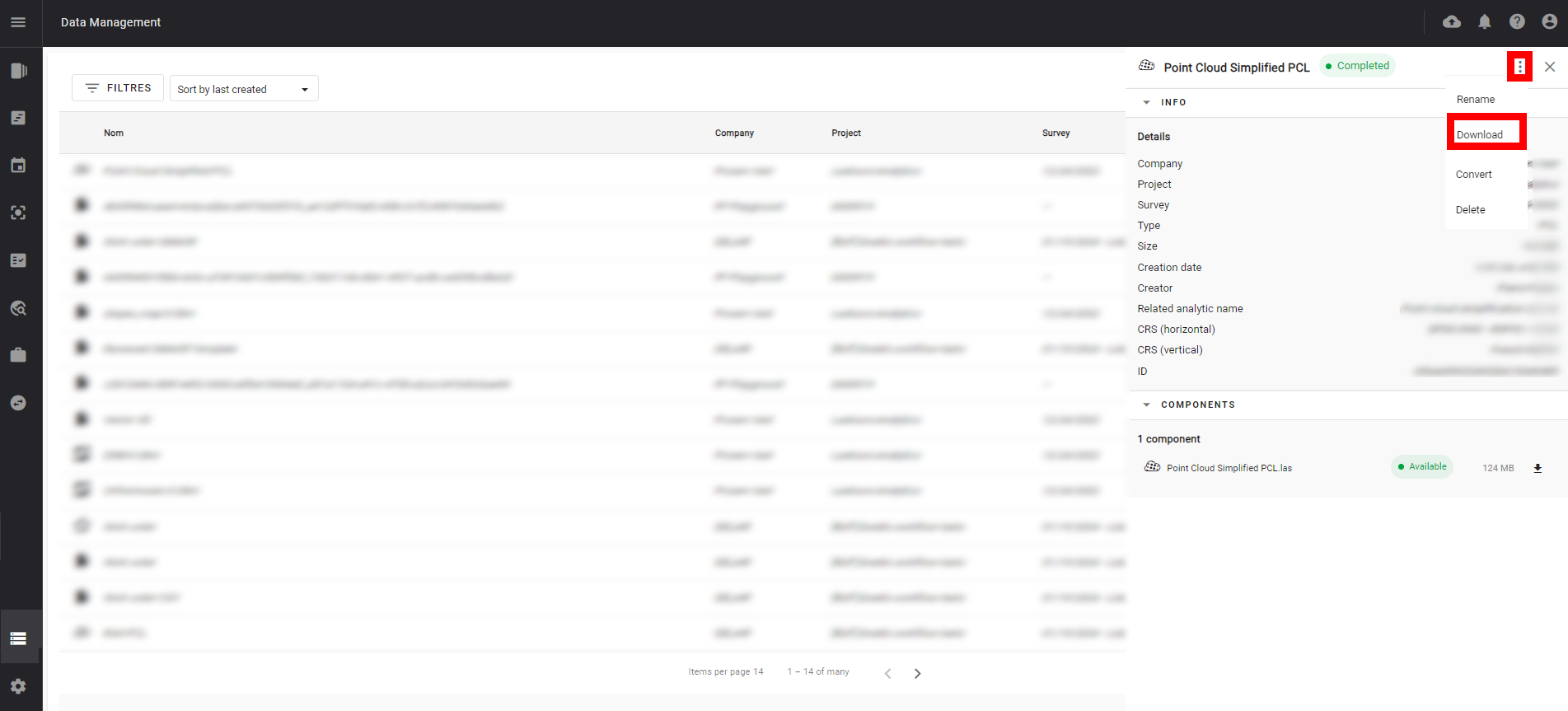
4.2. Download one component
Users can download a component with the icon “Download”.
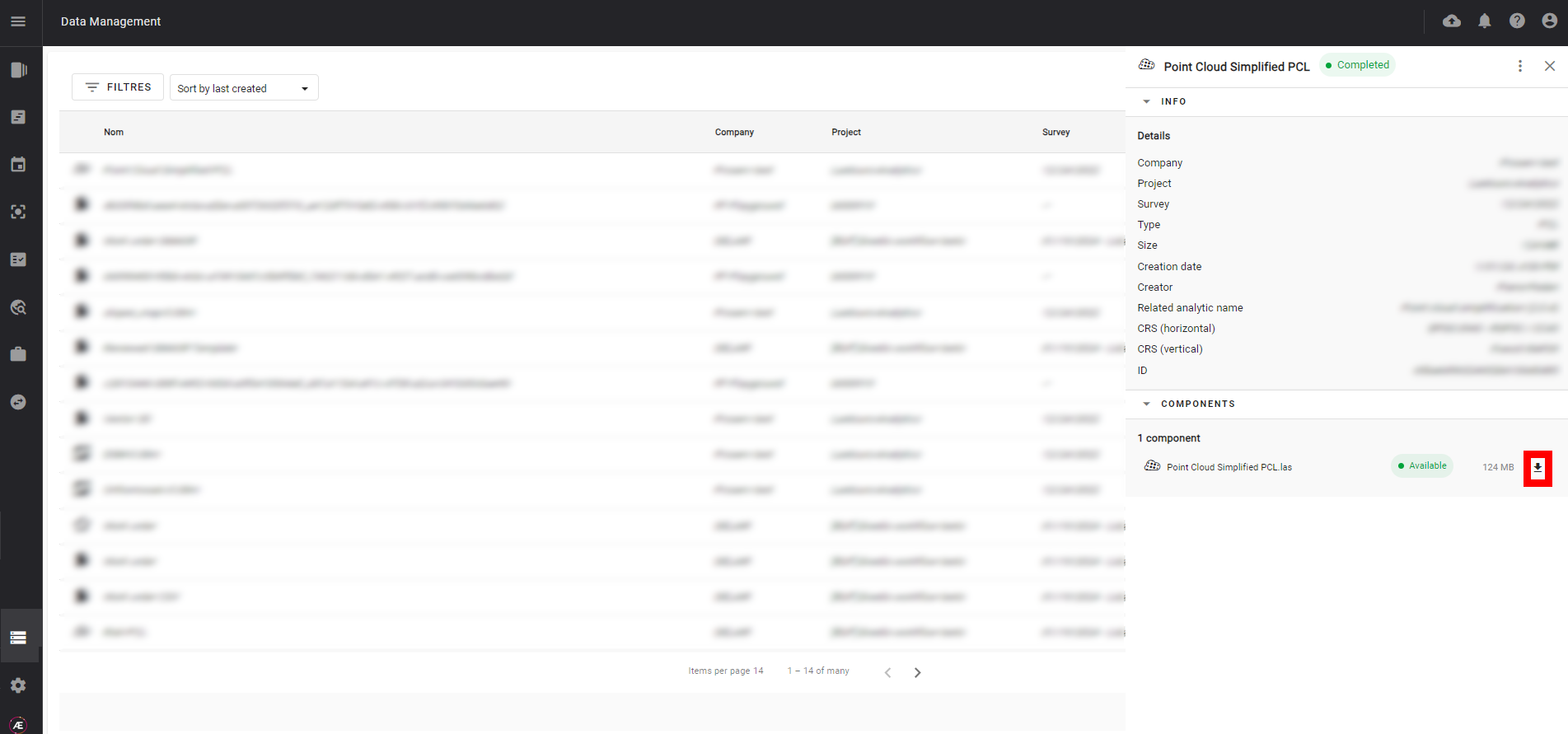
4.3. Create a package for bulk dataset download
Select multiple datasets and click on “Create Package” button to download all the selected datasets at once.
In this case, a zip file containing the selected data will be generated and made available as a dataset. Package generation may take some time depending on the amount of data.
Once generated, you can download it from the dataset dashboard.
